The 21 most dangerous airports in the world
White knuckle rides
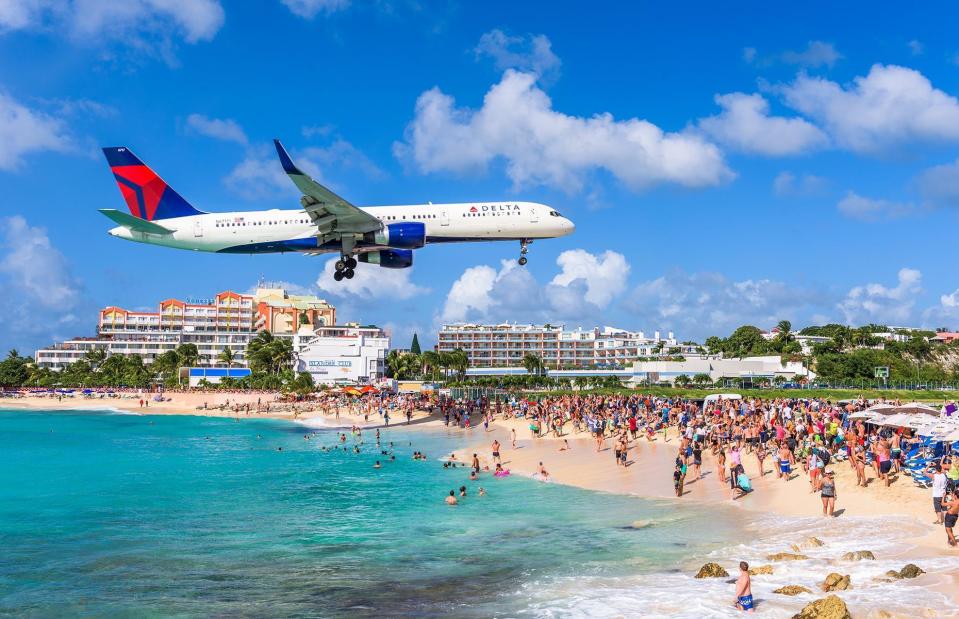
Sean Pavone/Shutterstock
Just setting foot on an airplane can be scary enough, but these terrifying runways amp up the fear factor even more. From narrow runways which stretch into the middle of the ocean, to those which are precariously perched in steep hillsides, these incredible landing strips are sure to provide a thrill to passengers. Strap yourselves in for a bumpy ride as we take a look at the world's most scary airport landings...
Courchevel Altiport, France
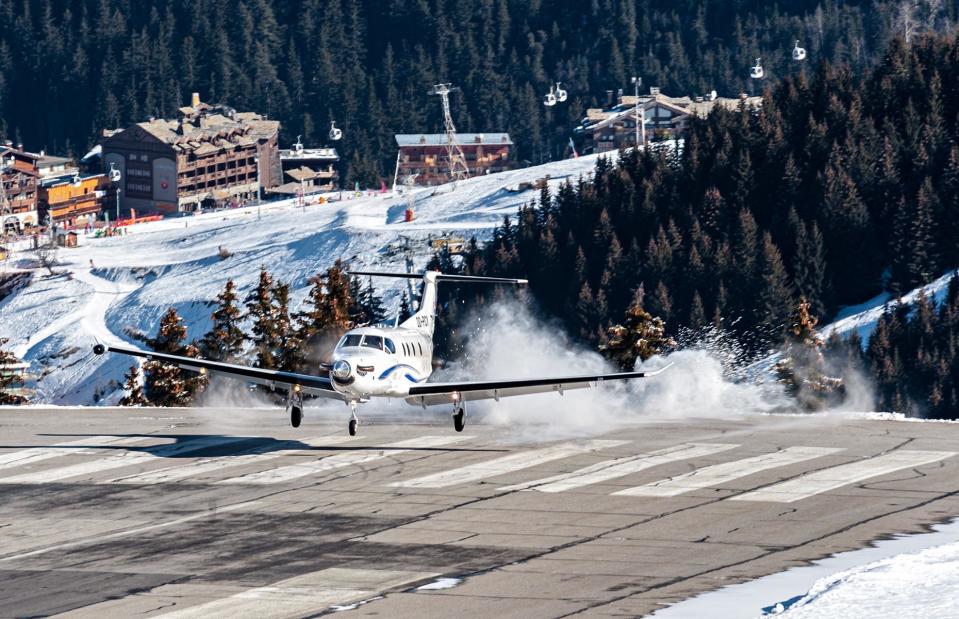
Roberto Chiartano/Shutterstock
As if the towering Alps surrounding the French ski resort of Courchevel weren’t enough of a challenge for pilots, this altiport (meaning a small airfield at a high altitude) has one of the world's shortest runways at 1,761 feet (537m) long. Not much room for error!
Courchevel Alitport, France
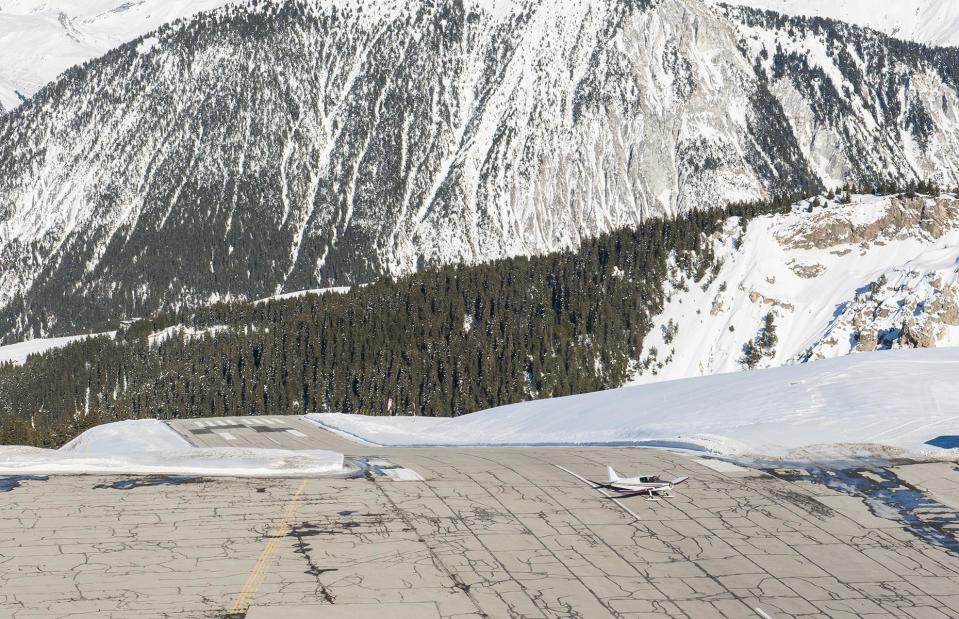
Paul Vinten/Shutterstock
The runway is sloped upwards to a gradient of 18.66% – the highest gradient in the world no less – and, owing to its proximity to the ski resort and passing skiers, it’s probably just as scary being on the ground as in the plane.
Gibraltar International Airport, Gibraltar
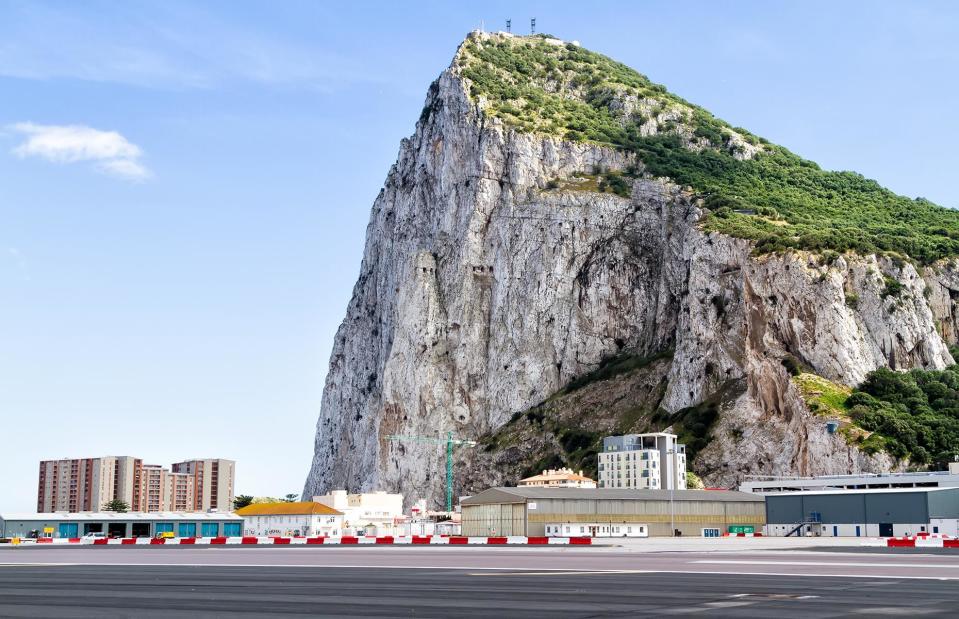
Milosz Maslanka/Shutterstock
It’s not so much the famous big Rock or the difficult high wind conditions that make flying into (or taking off from) Gibraltar a scary experience, although they don’t help matters...
Gibraltar International Airport, Gibraltar
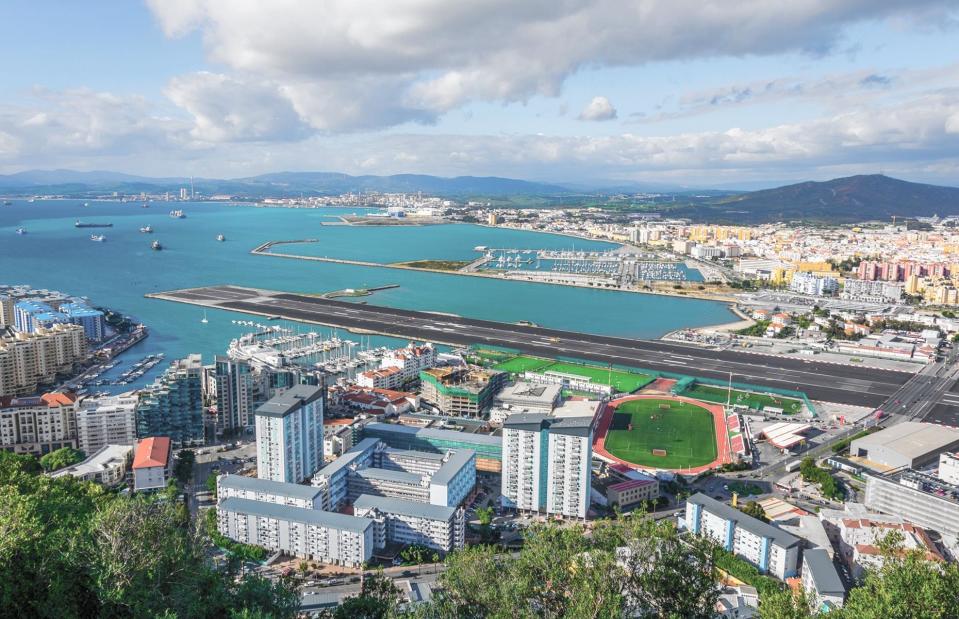
trabantos/Shutterstock
The really precarious thing about Gibraltar airport is that a moment too long on the runway and you’ll end up in the sea. That's right, it's surrounded by water at both ends. There's also a main road, which leads to central Gibraltar, crossing the runway. Traffic is stopped by a pair of barriers up to 10 minutes before a landing or take-off.
Barra Airport, Isle of Barra, Scotland
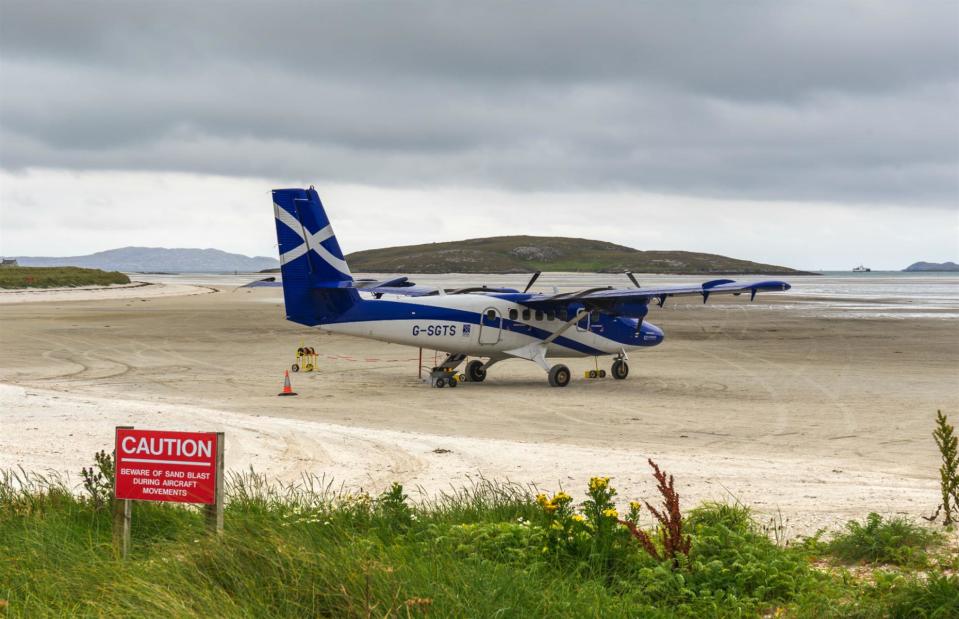
EyesTravelling/Shutterstock
The airport on the tiny island of Barra in the Outer Hebrides, off the west coast of Scotland, is the only place in the world where scheduled flights land on the beach.
Barra Airport, Isle of Barra, Scotland
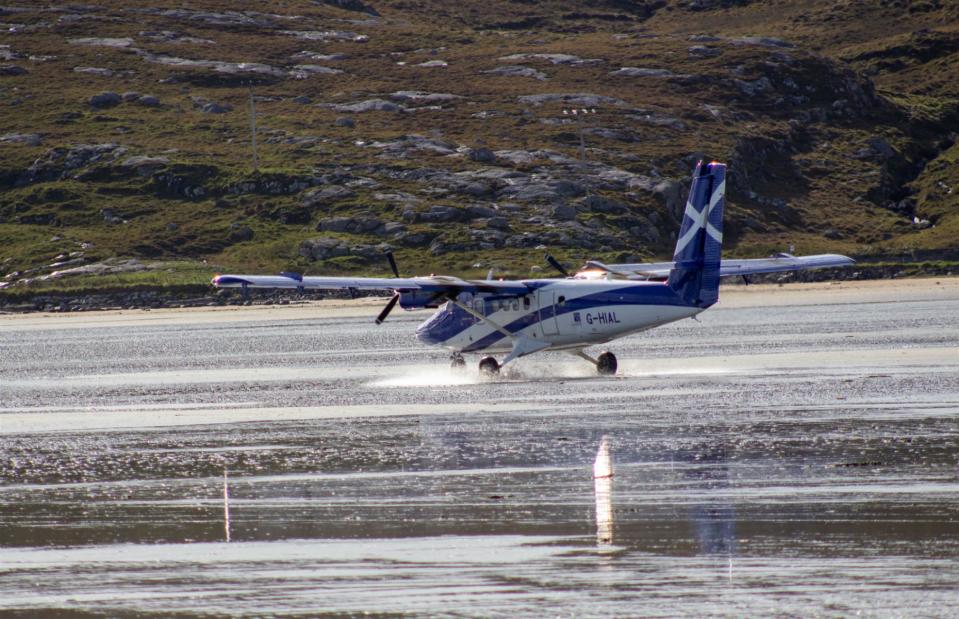
Richard Murphy Fine Art/Shutterstock
The beach has three runways, which means that planes can almost always land with the wind in the right direction. The whole area is submerged by the sea at high tide so the schedule changes from day to day. While a flight landing here can offer beautiful views, it's also terrifying to think you're reliant on the sea's rise and fall levels.
Cristiano Ronaldo Airport, Madeira, Portugal
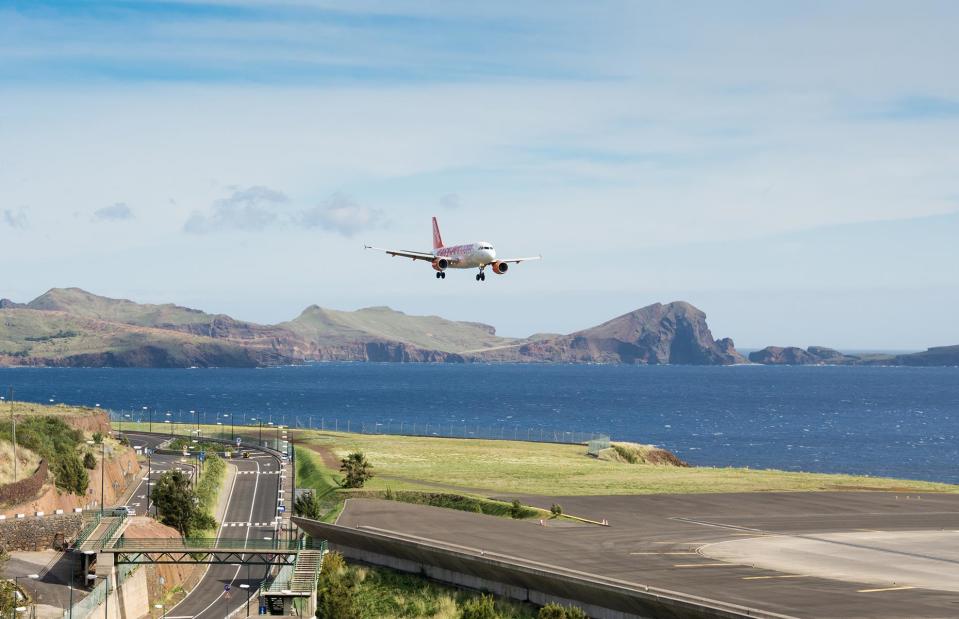
Alberto Loyo/Shutterstock
It may look pretty but the landing strip at the airport on this little Portuguese archipelago is often at the mercy of incoming weather fronts, which create unpredictable turbulence even on the clearest of days.
Cristiano Ronaldo Airport, Madeira, Portugal
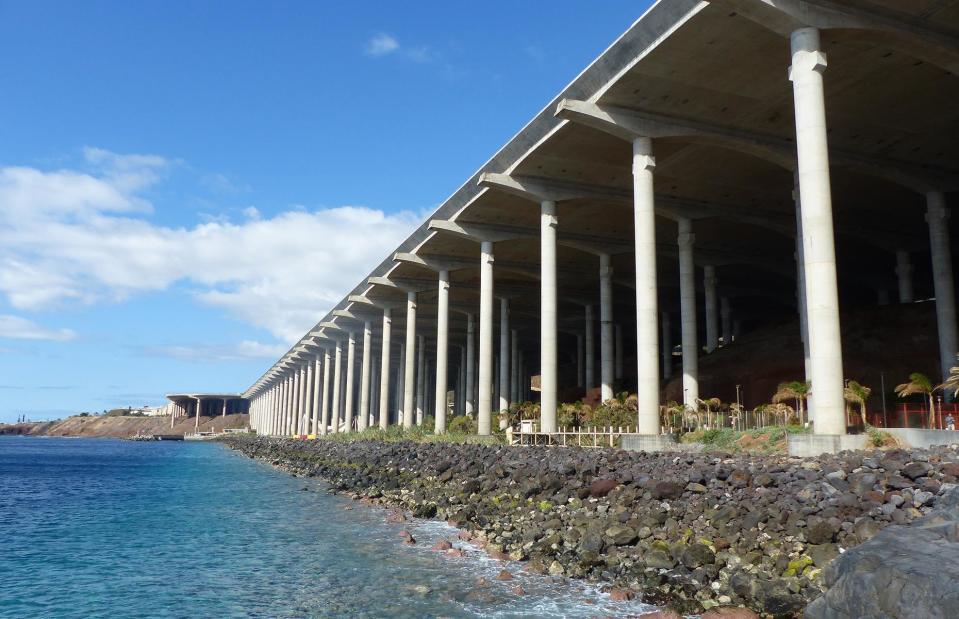
guentermanaus/Shutterstock
Owing to Madeira’s increasing popularity as a tourist destination, the runway has been extended several times to accommodate larger aircraft. Instead of reclaiming land, though, the runway was built on stilts and partly covers the Atlantic. The fierce crosswinds, combined with its proximity to nearby mountains, sometimes makes for a heart-stopping few hours (yes, plural!) of hovering at 14,000 feet (4,267m) waiting for the extreme conditions to subside.
Narsarsuaq Airport, Greenland
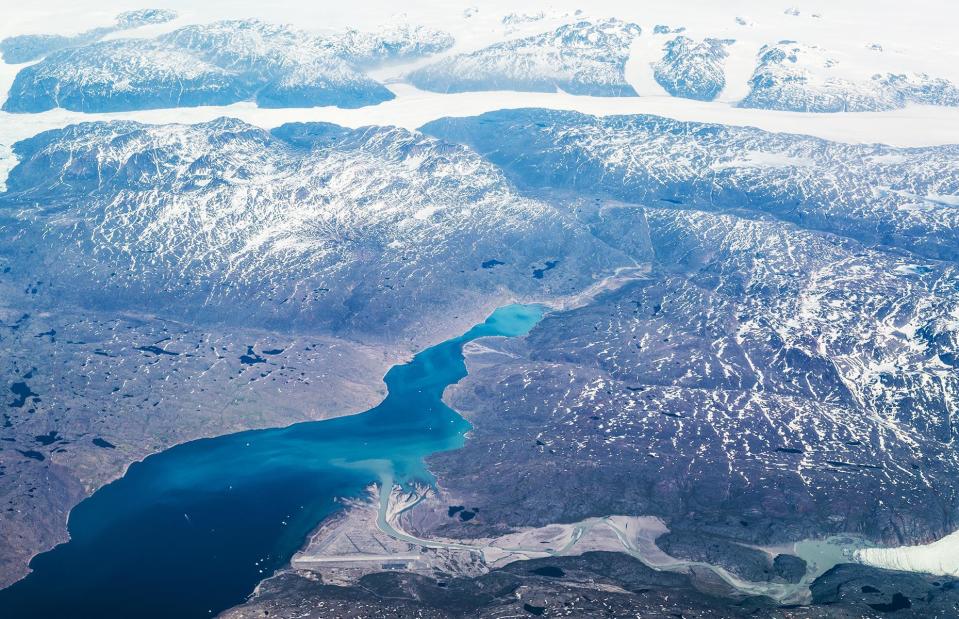
Mario Hagen/Shutterstock
Don't be fooled by this stunning view from up high. Not only do pilots have to negotiate the icy mountains in this remote part of the far Northern Hemisphere – landing even involves flying up a fjord – but fog and high winds are common occurrences. Night landings and take-offs are banned completely here.
Paro International Airport, Kingdom of Bhutan
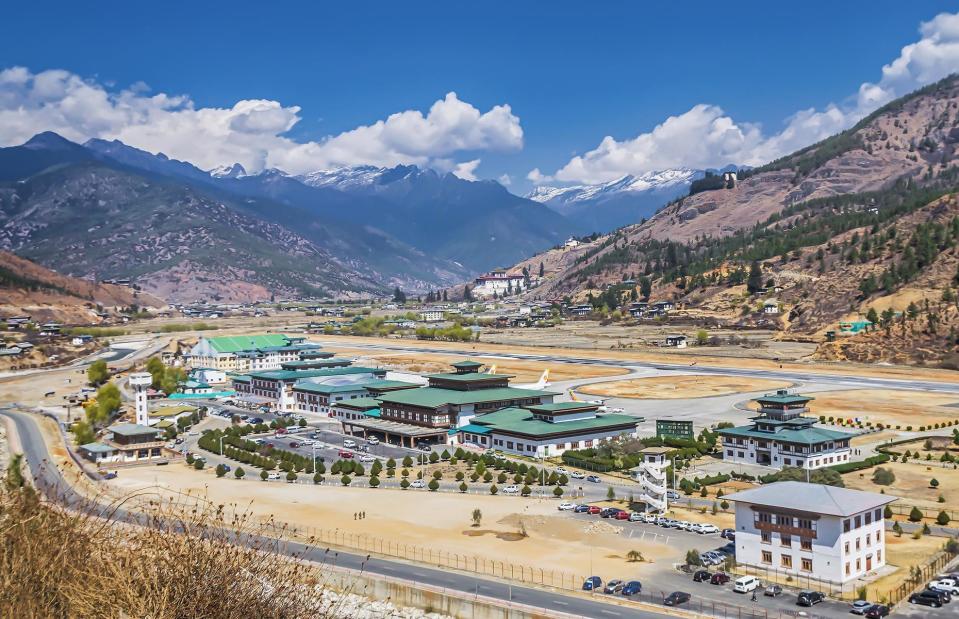
ultramansk/Shutterstock
Located in a valley at 7,300 feet (2,225m) above sea level and surrounded by lofty peaks reaching 18,000 feet (5,486m) high, planes must take a tight line through a narrow gap in the mountains – in daylight hours only – to reach the runway that's only visible moments before landing. It’s no surprise, then, that there’s only a handful of pilots worldwide who are trained sufficiently to do this. Rather them than us!
Juancho E. Yrausquin Airport, Saba, Caribbean

Bildagentur Zoonar GmbH/Shutterstock
At only 1,312 feet (400m) long, the landing strip at Jauncho E. Yrausquin Airport is the shortest commercial runway in the world. Not only that, but with a steep drop into the sea at both ends, it makes for some nail-biting take-offs and landings.
Juancho E. Yrausquin Airport, Saba, Caribbean
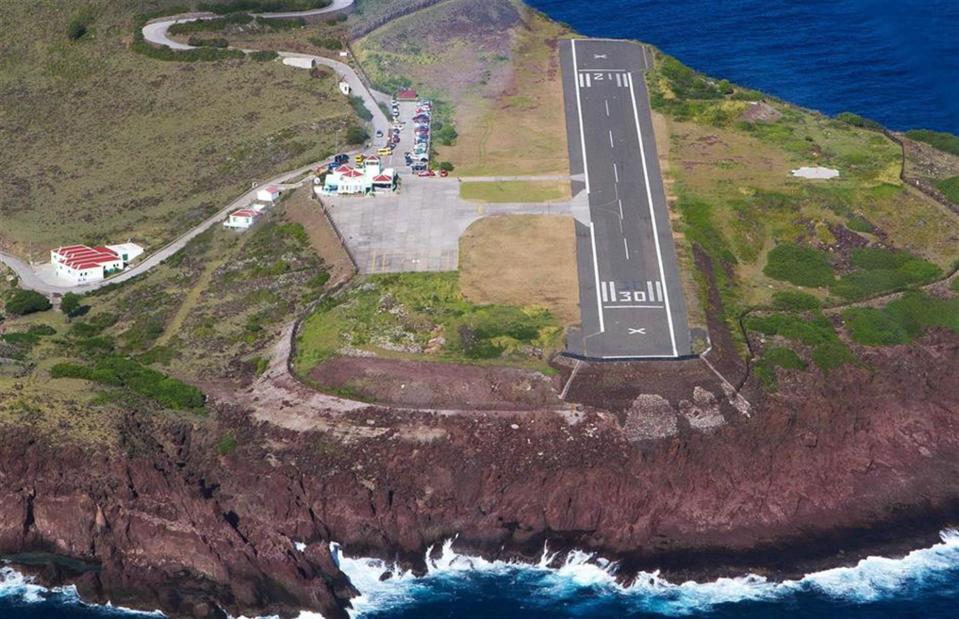
Albert Nieboer/DPA/PA Images
However, those that dare board a helicopter or turboprop planes (the only aircraft allowed to land here) from sister isle St. Maarten will be wowed with incredible views of the volcanic island. The flight is only 12 minutes but they will be some of the most memorable of your life.
Gisborne Airport, New Zealand
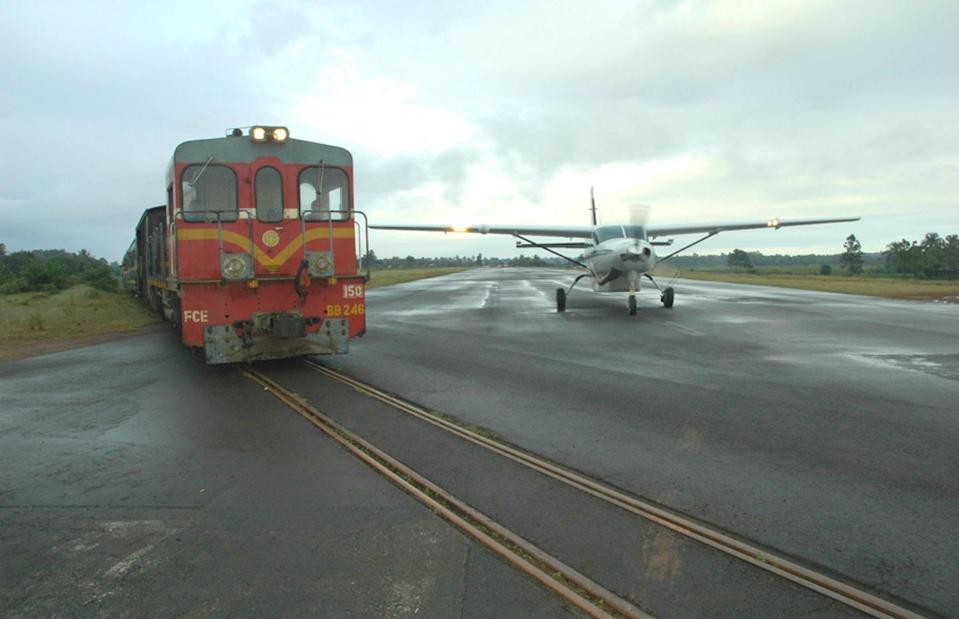
Chirlula/Wikimedia Commons/CC BY-SA 2
No, you’re not imagining it: that is a train you see chugging across the runway of this little regional airport in New Zealand. In fact, it’s the Palmerston North–Gisborne Line, which crosses straight through Gisborne Airport on the east coast of the North Island, making it the only airport in the Southern Hemisphere with a railway line crossing the main runway.
Skiathos International Airport, Greece
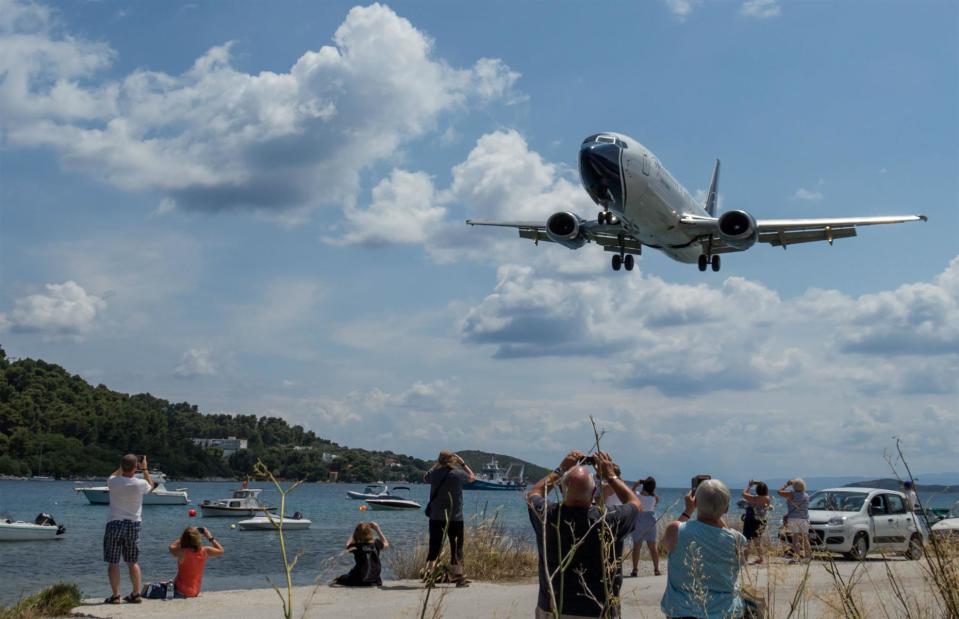
Marija Vujosevic/Shutterstock
This diminutive, craggy Greek island only got an airport with the aid of reclaiming the land from the sea between it and the neighboring island of Lazareta. Obviously such a move has presented a few hair-raising moments not only to passengers but to beachgoers too...
Skiathos International Airport, Greece
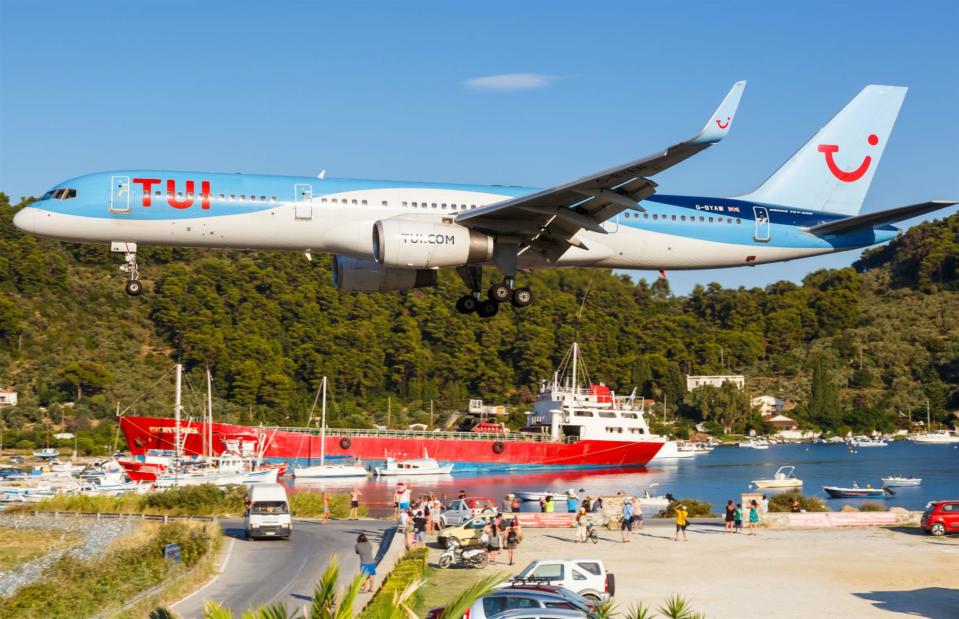
Markus Mainka/Shutterstock
Planes fly so low over a nearby beach and public road that those sunbathing or in traffic can probably see what the passengers had for their meals. The surreal experience attracts plane spotters from all over the world to congregate. Dubbed 'the St Maarten of Greece', in reference to a very similar scene on the Caribbean island (see later in this gallery), it's even scarier for the passengers looking out of their windows.
Wellington International Airport, New Zealand
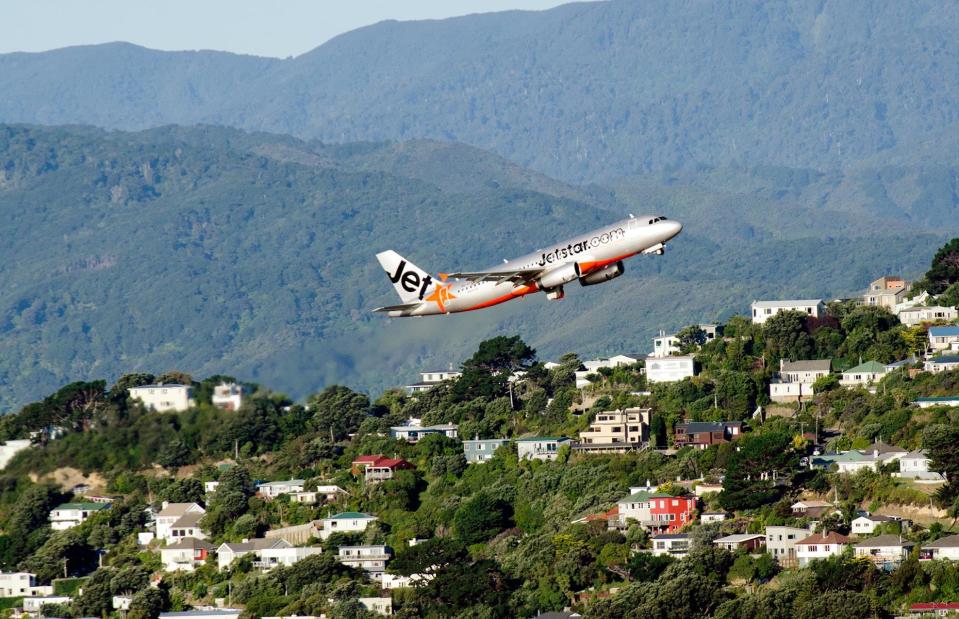
ChameleonsEye/Shutterstock
Although the runway itself is built on low-lying land by the sea, it’s incredibly close to the capital city’s suburbs and surrounding mountains. That, coupled with the unpredictable air currents and strong cross winds, means that you can be in for a bumpy ride – and landing.
Gustaf III Airport, St Barts, Caribbean
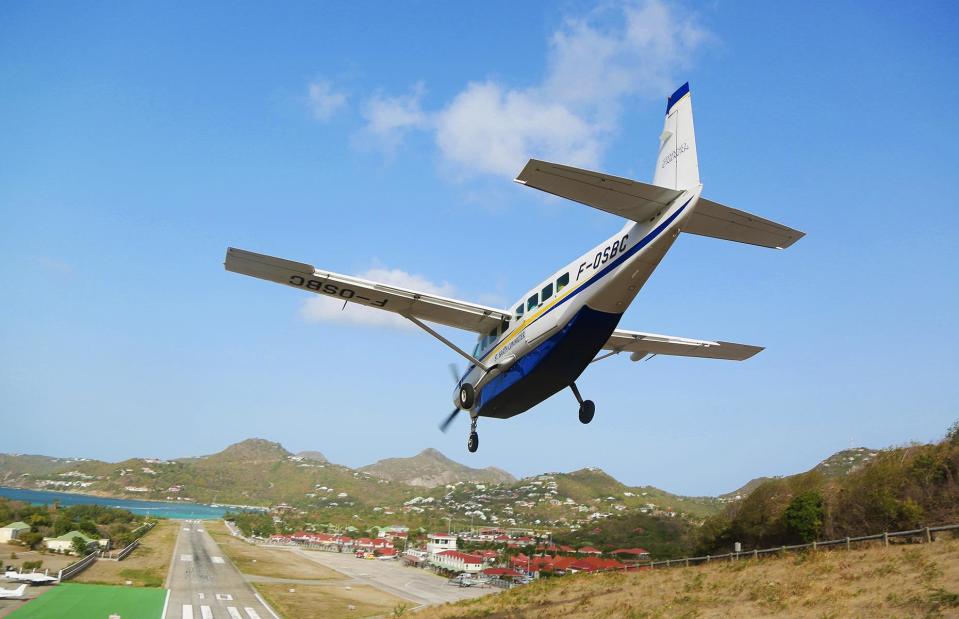
Leonard Zhukovsky/Shutterstock
This runway is bookended by a steep hillside at the approach end and the deep blue sea at the other. Add to the mix the proximity of local roads and you’ll want to close your eyes as you fly in (if not waving to passers-by on the road, that is).
Princess Juliana International Airport, St Maarten, Caribbean

mariakraynova/Shutterstock
This famous, extremely low approach looks too close for comfort for all involved. But the landing strip at St Maarten's Princess Juliana International Airport is via the sea and pilots must keep a close eye on their altitude – as well as sunbathers – as the route passes narrowly over Maho beach.
Princess Juliana International Airport, St Maarten, Caribbean
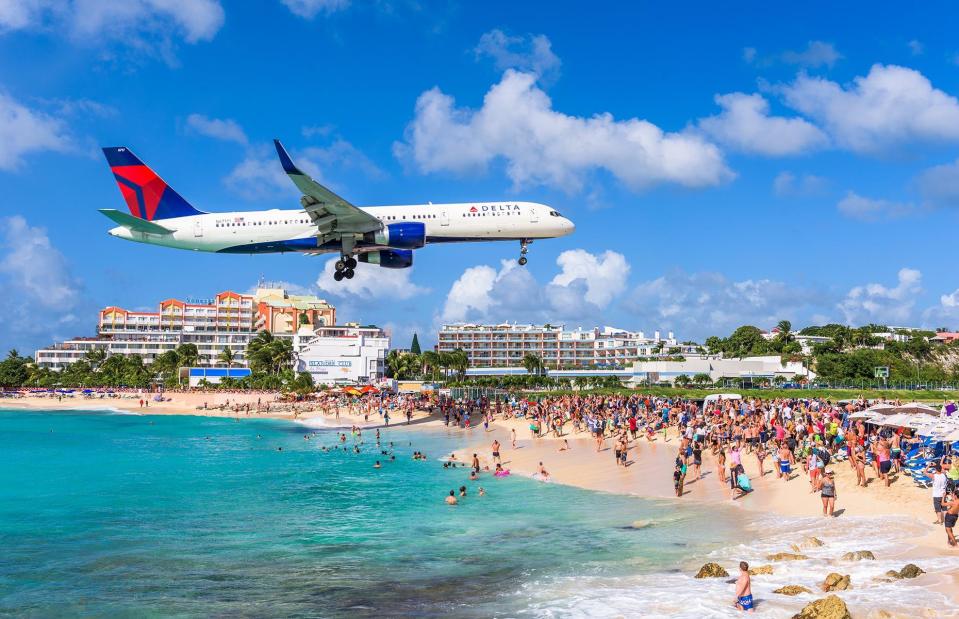
Sean Pavone/Shutterstock
The beach has become a popular spot from which to watch planes and there are plenty to see and hear. In fact, the deafening noise of the Boeing 737s coming into land, combined with the wind, leaves thrill-seekers in a spin. They line up at the fence to feel the force (not recommended), bringing a whole new meaning to the term plane spotting. Passengers inside the aircraft have their hearts in their mouths, which is understandable.
Kushok Bakula Rimpochee Airport, Leh, India
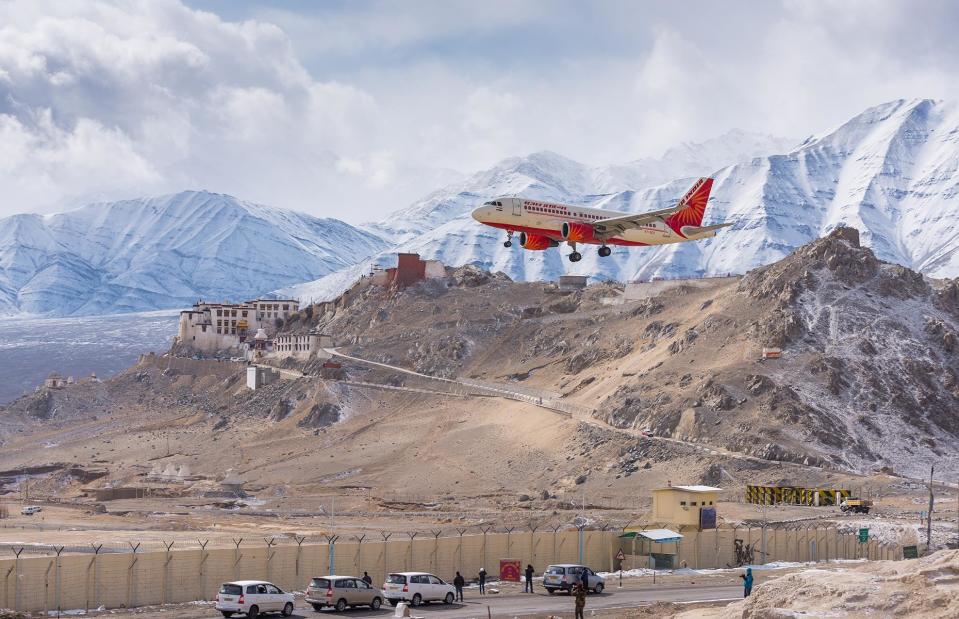
GoBOb/Shutterstock
Situated in the heart of the Himalayan mountain range, Leh's airport is often regarded as one of the most scenic approaches in the world. It’s also one of the highest at 10,600 feet (3,256m) above sea level, and because of fierce afternoon winds, planes only take off and land in the mornings.
Kushok Bakula Rimpochee Airport, Leh, India
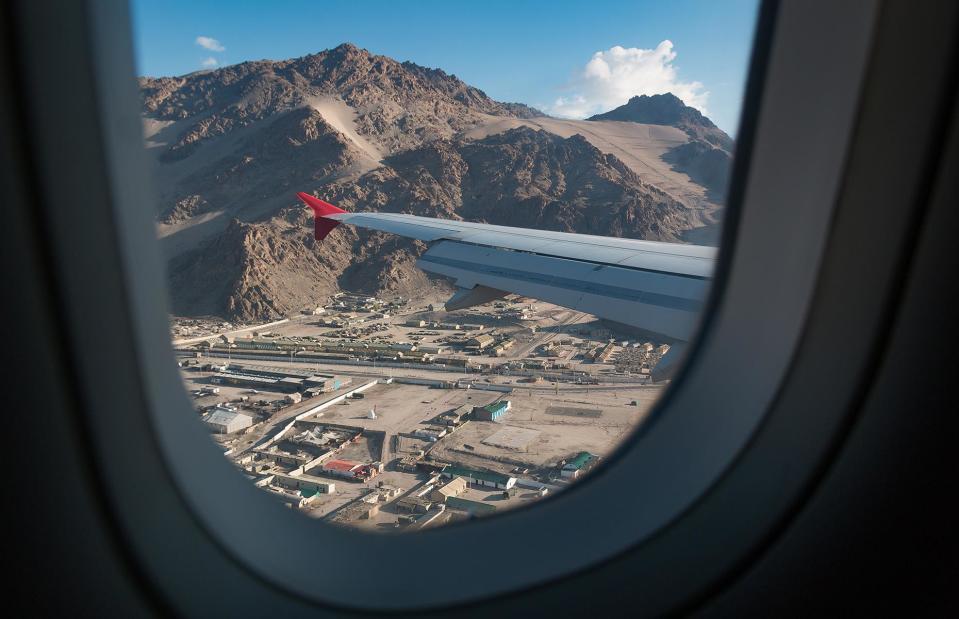
tonbluesman/Shutterstock
Forget your comfort teddy to hide behind as you dodge the peaks, though – hand luggage is forbidden. Airport security is incredibly tight up in this region of India and passengers have to comply with much stricter checks than usual.
Tioman Airport, Malaysia
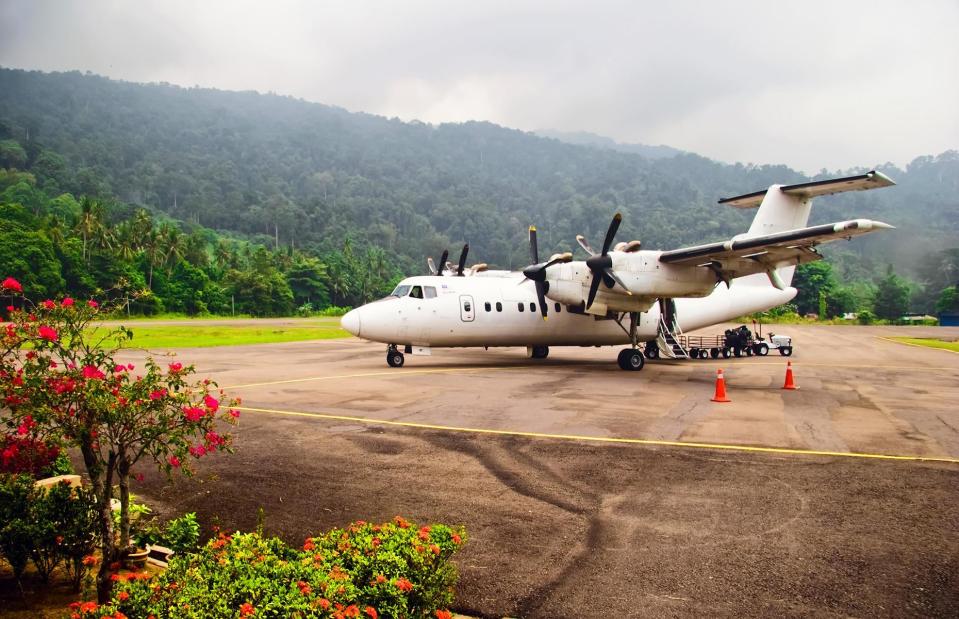
DeltaOFF/Shutterstock
Only one airline flies to this tiny island airport from Kuala Lumpur, and it's a good job, because the runway is a one-way street. Precision is required to make the 90-degree turn, narrowly avoiding a mountain, followed by an immediate reduction in speed in order to avoid the sheer drop at the other end.
Velana International Airport, Male, Maldives
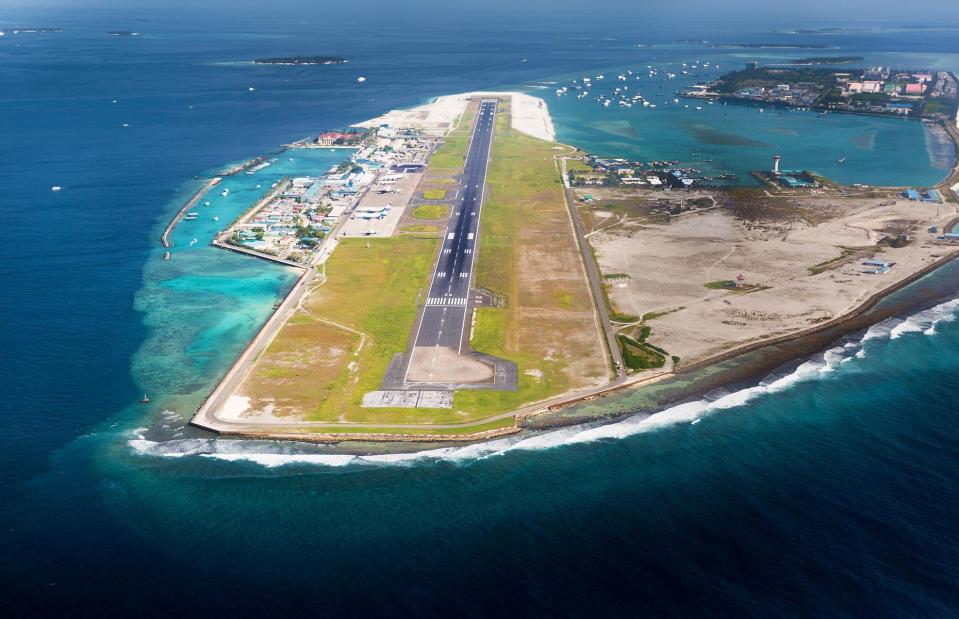
klempa/Shutterstock
This is the main international airport for the Maldives, located on Hulhule Island in the North Male Atoll. So if you want to dip your toes in the pristine blue waters, you’ll have to stomach the gut-wrenching landing that almost sees the plane take a dip too.
Velana International Airport, Male, Maldives
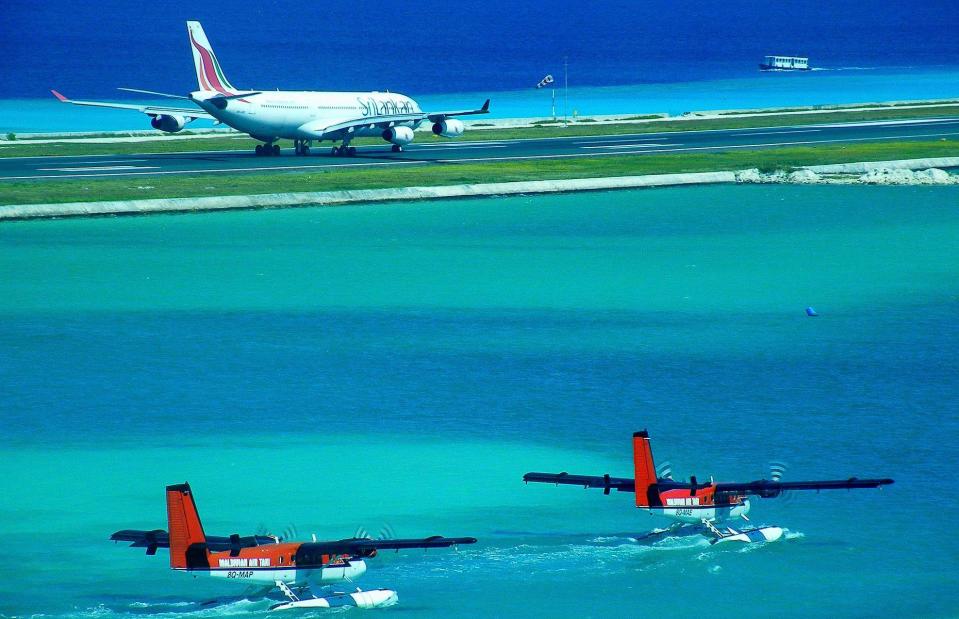
Hussain Didi/Flickr/CC BY-SA 2.0
Terrifying yet beautiful at the same time, passengers are usually more worried about the onward journeys to resorts made by seaplane. The tiny aircraft can safely carry a maximum of 15 passengers but it's the taking off and landing on water that freaks most people out.
Queenstown Airport, New Zealand
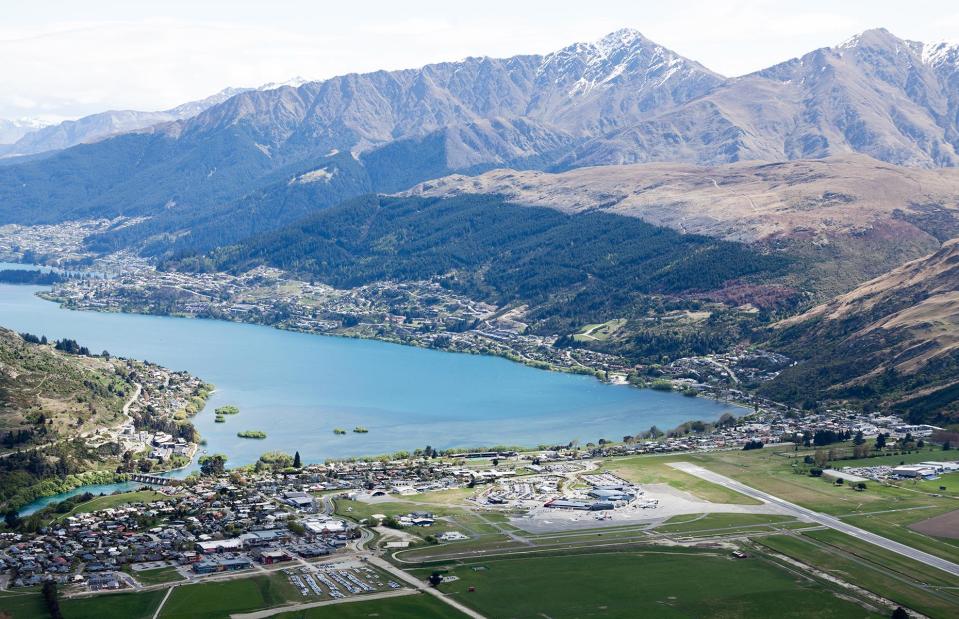
alexfe/Shutterstock
En route to Queenstown, planes have to negotiate the craggy mountain region and the frequent high winds plus sideways rain. Thankfully special procedures have been introduced to ensure safe operations, which is lucky now that night-time flights have been introduced.
Queenstown Airport, New Zealand
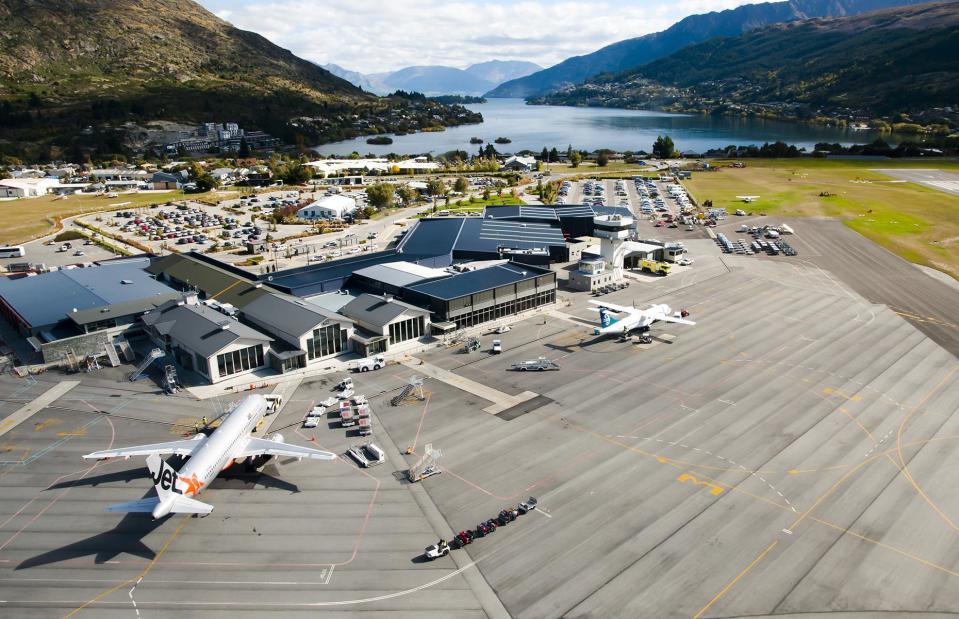
Adwo/Shutterstock
While the descent is stunning, landing here can literally take your breath away as the tips of the plane wings appear to touch the side of the snow-capped mountains above the edge of Lake Wakatipu. If the plane overshoots the runway, it could end up in the fjords.
Svalbard Airport, Norway

Fasttailwind/Shutterstock
Surrounded by the icy wilderness of the Svalbard archipelago, this airport is the northernmost commercial airport in the world, and what makes it scary? The fact it's built on permafrost (it's insulated though). There are no runway lights either, so only flights during the daytime are permitted – which is fine until you realize that in the winter months, the sun doesn't really rise here.
Congonhas International Airport, Sao Paulo, Brazil
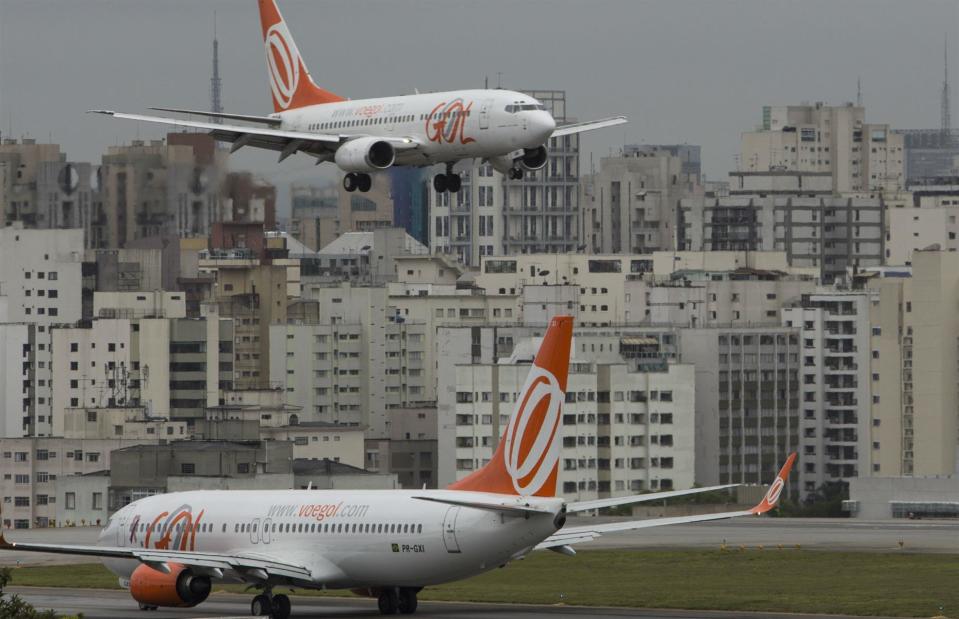
Miguel Schincariol/AFP via Getty Images
Not only is this São Paulo airport a scary spot to land, but it's also dangerous. Famed for its risky runways that are often accused of being the slipperiest in the world due to its lack of drainage grooves, leading to standing water, the airport is located in a dense built-up area of the city meaning planes have to negotiate a way of avoiding the high rise buildings. Passengers feel like their plane is scraping the top of the skyscrapers as they come down to land.
Tenzing-Hillary Airport, Lukla, Nepal
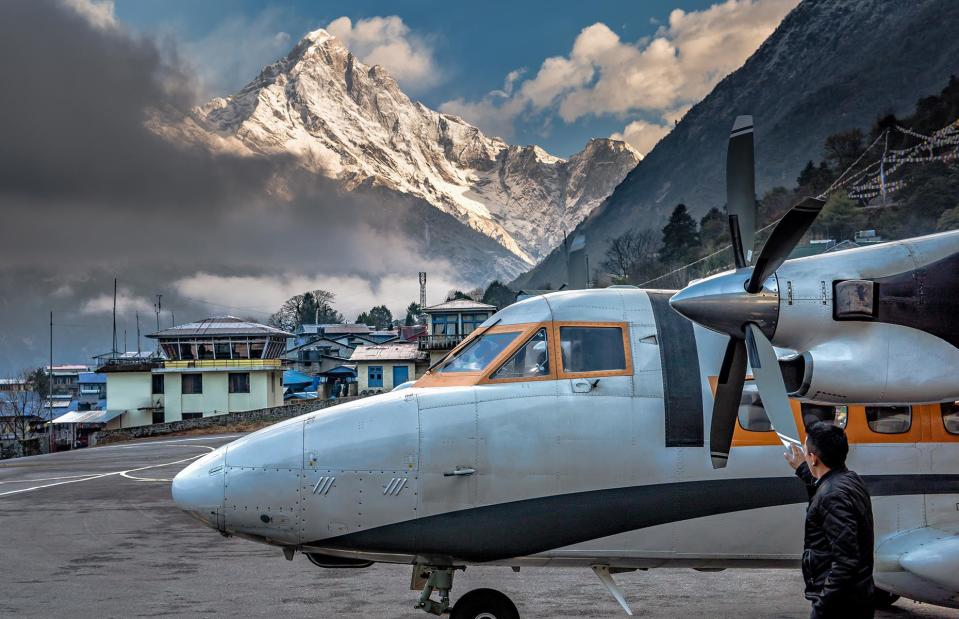
mbrand85/Shutterstock
If you’re planning on visiting Everest Base Camp, the chances are you’ll need to go via this mountain landing strip. The approach through the snowy peaks is a challenge for only the most experienced pilots and landing requires precision accuracy so as not to slam into the high mountain at the end of the runway. There are no second chances here...
Tenzing-Hillary Airport, Lukla, Nepal
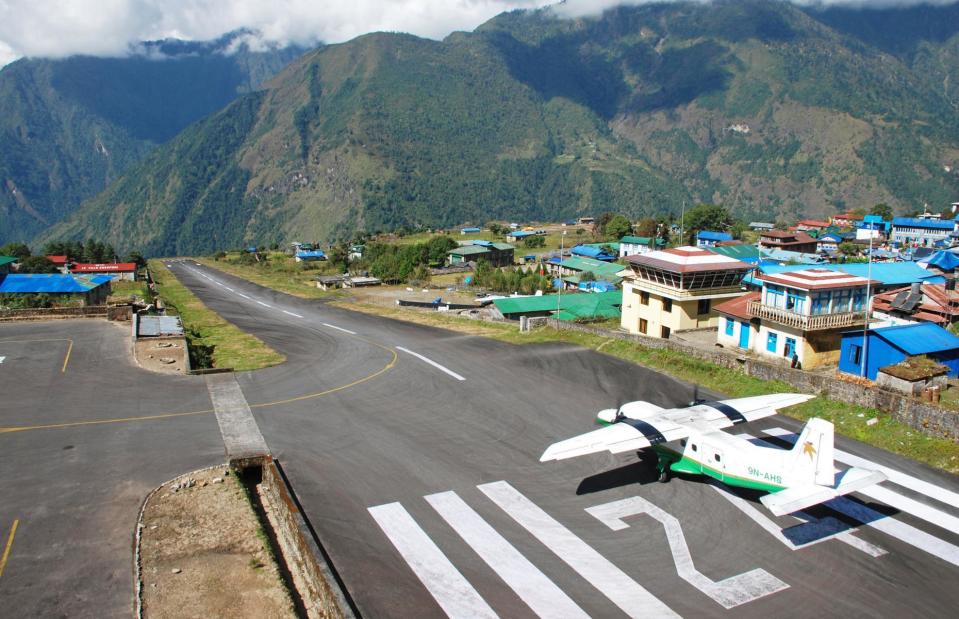
Jiri Foltyn/Shutterstock
Needless to say, it's not a journey for the faint-hearted, with a mountain at one end of the runway and a 1,000-foot (304m) sheer drop at the other. Taking off isn’t any less hairy: the runway is only 1,729 feet (527m) long. Sometimes, this unique airport has to close briefly during the morning due to strong southwest winds which whip around the area.
St Helena Airport, St Helena
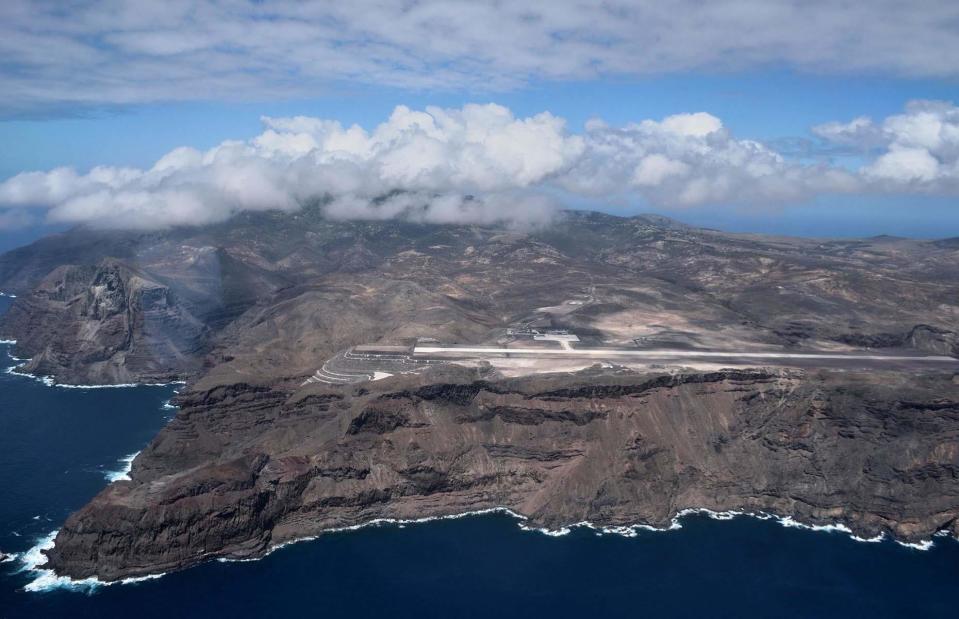
Simon Benjamin/Alamy Stock Photo
When St Helena's airport first opened it was dubbed the world's most useless airport as it was only built to accommodate aircraft no larger than a Boeing 737-700 or an Airbus A319. In addition to that, the winds here can change speed and direction in a split second, which means it's extremely dangerous for take off and landing. During trial flights in 2016, it took a Boeing 737-800 three attempts to land and a former acrobatics pilot called the landing "hair-raising".
St Helena Airport, St Helena
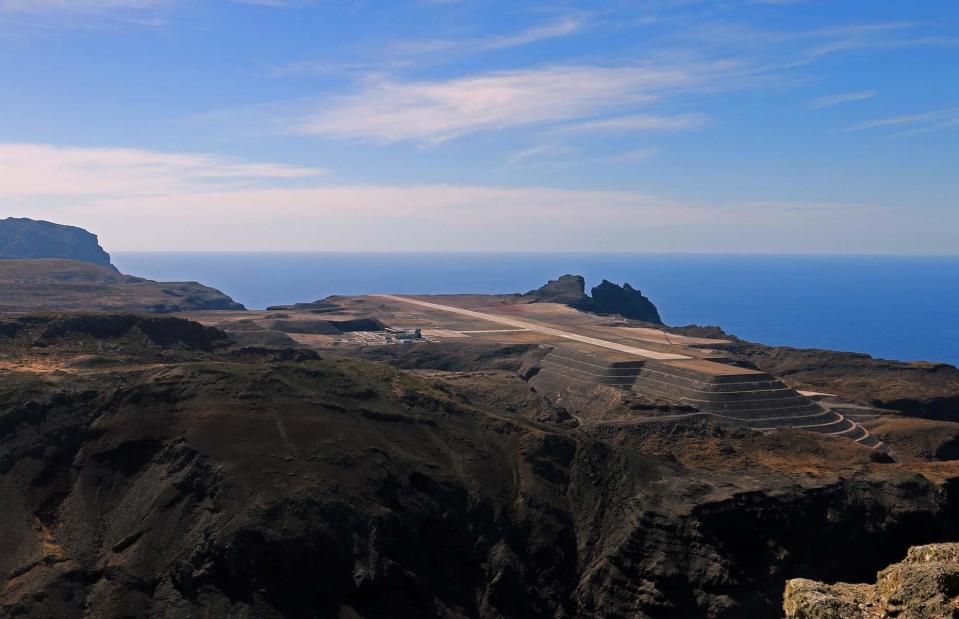
Craig Hallewell/Alamy Stock Photo
Since then wider runway shoulders, extensions and turning circles have been added, and the length of the runway extended to 1.2 miles (1.9km), which means it can welcome aircraft like the Boeing 757. However, the weather conditions (or, in fact, the sheer cliffs on nearly all sides of the runway) have not changed, meaning it's still classed as a category C airport, so only specially trained pilots and crew can land due to the tricky conditions.
Antarctica
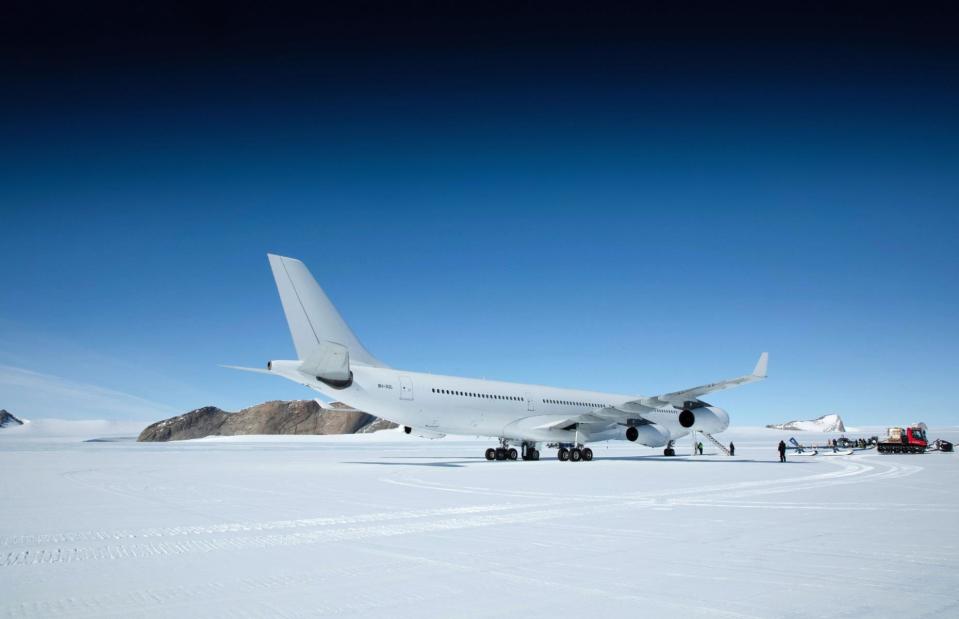
Marc Bow/Speedstream Films
Clapping as a plane lands is considered by many to be a big no-no, but we can forgive the passengers on this momentous flight. Operated by Hi Fly, this Airbus A340 was the first ever to land on Antarctica, touching down on the icy runway on 2 November 2021. That was after a journey of more than 2,500 nautical miles (4,630km), from Cape Town, South Africa.
Antarctica

Marc Bow/Speedstream Films
According to pilot Carlos Mirpuri, the white snowy terrain makes it harder to judge distance and the pilot has to wear special eyewear to reduce the level of reflection. Despite all these challenges, it was said to be a smooth landing and the rest of the journey went according to plan. It is hoped that A340 planes can be used in the future to transport tourists and researchers to Antarctica.


